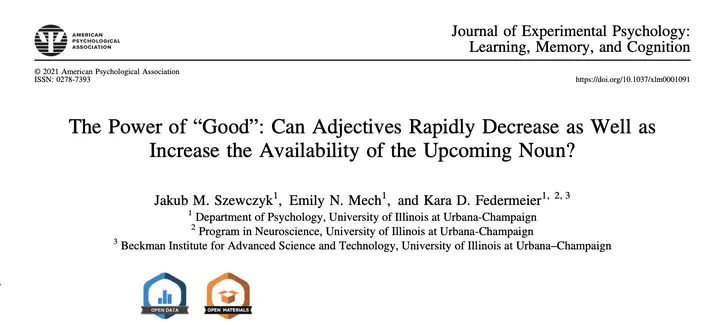The Power of "Good": Can Adjectives Rapidly Decrease as Well as Increase the Availability of the Upcoming Noun?

Abstract
Can a single adjective immediately influence message-building during sentence processing? We presented participants with 168 sentence contexts, such as “His skin was red from spending the day at the. . .” Sentences ended with either the most expected word (“beach”) or a low cloze probability completion (“pool”). Nouns were preceded by adjectives that changed their relative likelihood (e.g., “neighborhood” increases the cloze probability of pool whereas “sandy” promotes beach). We asked if participants’ online processing can be rapidly updated by the adjective, changing the resulting pattern of facilitation at the noun, and, if so, whether updates unfold symmetrically—not only increasing, but also decreasing, the fit of particular nouns. We measured event-related potentials (ERPs) to the adjective and the noun and modeled these with respect to (a) the overall amount of updating promoted by the adjective, (b) the preadjectival cloze probability of the noun and, (c) the amount of cloze probability change for the obtained noun after the adjective. Bayesian mixed-effects analysis of N400 amplitude at the noun revealed that adjectives rapidly influenced semantic processing of the noun, but did so asymmetrically, with positive updating (reducing N400 amplitudes) having a greater effect than negative updating (increasing N400s). At the adjective, the amount of (possible) updating was not associated with any discernible ERP modulation. Overall, these results suggest the information provided by adjectives is buffered until a head noun is encountered, at which point the access of the noun’s semantics is shaped in parallel by both the adjective and the sentence-level representation.